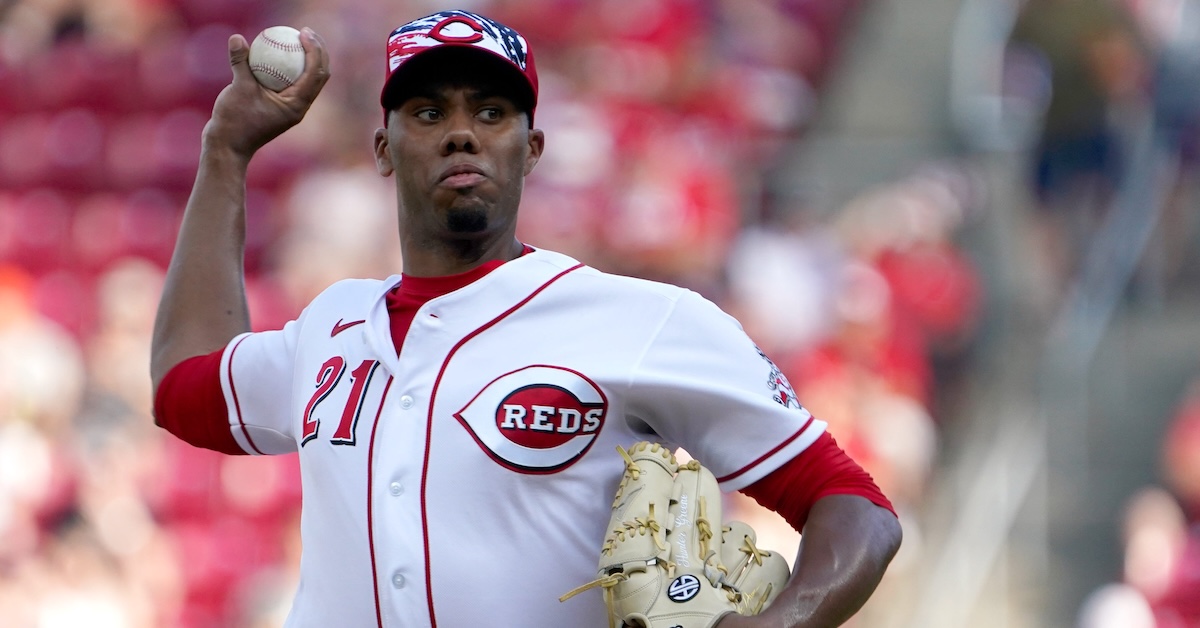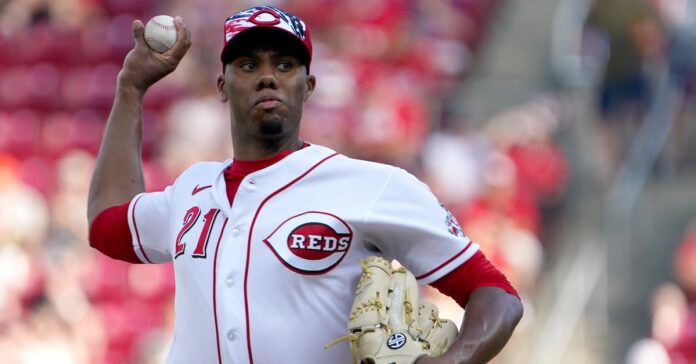
Love ’em or hate ’em, the category of “anticipated” stats has utility after we’re speaking about predicting the long run. The info actually encourage combined emotions amongst followers, however they carry out an necessary process of linking the issues that Statcast and related non-traditional metrics say to efficiency on the sector. A tough-hit charge of X% or a launch angle of Y levels doesn’t actually imply something by itself, with out the context of what’s occurs in baseball video games.
I’ve been doing projections now for practically half (!) my life, so exterior of my regular curiosity, I’ve a vested curiosity in utilizing this type of info productively in projections. Just like the Statcast estimates (preceded with an “x,” as in xBA, xSLG, and so forth.), ZiPS has its personal model, very creatively utilizing a “z” as an alternative.
It’s necessary to recollect these aren’t predictions in themselves. ZiPS actually doesn’t simply have a look at a pitcher’s zSO from the final yr and say, “Cool, brah, we’ll simply go together with that.” However the knowledge contextualize how occasions come to move, and are extra steady than the precise stats are for particular person gamers. That permits the mannequin to shade the projections in a single course or the opposite. Typically that’s extraordinarily necessary, as within the case of house runs allowed for pitchers. Of the fielding-neutral stats, house runs are simply essentially the most risky, and residential run estimators for pitchers are far more predictive of future house runs allowed than are precise house runs allowed are. Additionally, the longer a pitcher “underachieves” or “overachieves” in a selected stat, the extra ZiPS believes within the precise efficiency fairly than the anticipated one. Extra info on accuracy and development might be discovered right here.
As we did with hitters yesterday, let’s begin with a fast have a look at how final season’s pitching overachievers and underachievers by June carried out on the mound over the remainder of the season. Once more, please notice that these aren’t projections themselves, however fairly indicators of efficiency that help in making projections:
2024 FIP Overachievers By June 13
Of the 19 largest FIP overachievers in accordance with zFIP — I used to be apparently unable to depend to twenty when making the chart — 18 managed a minimum of 30 innings over the remaining 2024 schedule. Trevor Williams, the most important overachiever, went on the injured checklist just a few weeks later with a flexor pressure that ended his season. All 18 had a better FIP after June 13. The RMSE (root imply squared error) between FIP by June 13 and rest-of-season FIP was 1.46, whereas for zFIP vs. rest-of-season FIP it was 0.93. In different phrases, zFIP did about 60% higher at projecting FIP for the remainder of the season than precise FIP did for the overachievers. Keep in mind, there’s no projection knowledge or regression to the imply inbuilt to “assist” zFIP, which is solely derived from the Statcast and related sorts of knowledge by a selected date. Let’s have a look at final yr’s FIP underachievers:
2024 FIP Underachievers By June 13
For the 18 underachievers with a minimum of 30 innings over the remainder of the season, zFIP gained by a smaller margin, with an RMSE of 1.16 vs. 1.30 for FIP.
zFIP working higher with overachievers than underachievers seems to be a characteristic particular to 2024 fairly than a constant attribute of the mannequin; with a half-season of information, zFIP is often 30-40% extra correct than FIP at projecting future FIP.
Let’s begin the 2025 numbers off with zFIP underachievers and overachievers, based mostly on knowledge by June 29. I’m utilizing 40 innings pitched as a cutoff level right here:
2025 FIP Underachievers By June 29
2025 FIP Overachievers By June 29
zFIP doesn’t utterly salvage a poor displaying by Bowden Francis, however it brings him to the purpose of being a reasonably helpful innings-eater, a minimum of when his shoulder is healthier. Walker Buehler showing right here is attention-grabbing, as a result of I’ve gotten plenty of commentary in my chats during the last month that he appears to be like rather a lot higher than his precise outcomes; it appears to be like like a few of you people had been on to one thing. Zach Eflin being higher than his numbers is just too little, too late for the Orioles, however a minimum of this would possibly make him fetch extra on the commerce deadline. Seeing Hunter Greene right here is plenty of enjoyable, as he’s really having a legitimately glorious season already. This means that he could be stickier within the Cy Younger race going ahead.
The estimated numbers take a chunk out of a number of the league’s greatest pitchers, however a lot of them (Nathan Eovaldi, Garrett Crochet, Hunter Brown, MacKenzie Gore) are nonetheless seen as glorious contributors, simply not fairly to the identical diploma. Rising much less unscathed are Joe Ryan and Michael King. King has been hit more durable this season and is stepping into deal extra 1-0 counts. Ryan’s zFIP is much less regarding, as he has a historical past of outperforming his zStats, to the purpose the place ZiPS places much less emphasis on the anticipated stats when operating projections.
Turning our consideration to house runs:
2025 HR Underachievers By June 29
| Identify | HR | zHR | zHR Diff |
|---|---|---|---|
| Jameson Taillon | 22 | 13.6 | 8.4 |
| Emerson Hancock | 15 | 7.0 | 8.0 |
| Bowden Francis | 19 | 11.5 | 7.5 |
| Zach Eflin | 16 | 9.9 | 6.1 |
| Zack Littell | 23 | 17.5 | 5.5 |
| JP Sears | 18 | 12.5 | 5.5 |
| Ryan Yarbrough | 10 | 4.7 | 5.3 |
| Tanner Houck | 10 | 5.2 | 4.8 |
| Bailey Ober | 21 | 16.4 | 4.6 |
| Walker Buehler | 15 | 10.4 | 4.6 |
| Tanner Bibee | 15 | 10.7 | 4.3 |
| Aaron Nola | 11 | 6.8 | 4.2 |
| Jackson Rutledge | 8 | 3.8 | 4.2 |
| Jack Kochanowicz | 15 | 11.0 | 4.0 |
| Kyle Hendricks | 15 | 11.3 | 3.7 |
| Michael Lorenzen | 16 | 12.3 | 3.7 |
| Keider Montero | 11 | 7.3 | 3.7 |
| Tomoyuki Sugano | 17 | 13.4 | 3.6 |
| Kyle Hart | 8 | 4.4 | 3.6 |
| Tyler Holton | 8 | 4.4 | 3.6 |
2025 HR Overachievers By June 29
Of the three FIP parts, house runs are simply the place zStats for pitchers are essentially the most useful. In contrast to with hitters, house runs for pitchers are usually a completely dreadful stat from a predictive standpoint, and lots of the long-term failures to guage pitchers have come from taking very excessive or very low numbers for house runs allowed too critically. Certainly, house runs allowed being such an abysmal stat for pitchers is why xFIP is extra predictive regardless of it making the idea that pitchers exert no affect over whether or not a pitch turns into a house run, which is a ridiculous notion. Residence run suppression is much better measured by issues like exit velocity knowledge, so virtually any estimate that makes use of this knowledge will do a superior job predicting future house runs allowed than both house run tally or xFIP.
Jameson Taillon is an efficient instance right here. His barrel charge isn’t good and his hard-hit charge is extraordinary, however neither quantity is so inflated as to justify a roughly 70% improve in his house run allowed charge, neither is he all of the sudden lacking velocity. He’s allowed extra pulled fly balls, which is a nasty factor, however it solely accounts for about 4 extra house runs.
On to walks:
2025 Stroll Underachievers By June 29
2025 Stroll Overachievers By June 29
In contrast to house runs allowed, walks allowed (and strikeouts) are good stats for pitchers, so zStats don’t dominate the true numbers right here. zBB continues to be extra predictive than precise walks, primarily as a result of it contains two plate self-discipline stats which might be necessary main indicators of future stroll charge: out-of-zone swing proportion and first-pitch strike proportion.
Ben Brown is attention-grabbing right here due to the nice strides he’s made in his stroll charge within the majors, with zBB suggesting that he may get even higher. His enchancment within the first pitch of an at-bat has been fairly spectacular; he went from 46% strikes within the minors in 2024 to 69% within the majors this yr. Alas, he’s presently bedeviled by a .362 BABIP, so the Cubs try to “reset” him a bit within the minors. zBB is much less alarmed about Sandy Alcantara than you would possibly anticipate from his numbers this yr, particularly early on (and he has in actual fact improved in latest weeks). He could very effectively find yourself being essentially the most useful commerce candidate in July in any case.
Now let’s have a look at strikeouts:
2025 Strikeout Underachievers By June 29
2025 Strikeout Overachievers By June 29
| Identify | SO | zSO | zSO Diff |
|---|---|---|---|
| Zack Wheeler | 126 | 101.9 | 24.1 |
| Garrett Crochet | 135 | 114.7 | 20.3 |
| Hunter Brown | 118 | 98.5 | 19.5 |
| MacKenzie Gore | 129 | 111.6 | 17.4 |
| Chad Patrick | 93 | 75.7 | 17.3 |
| Joe Ryan | 104 | 86.9 | 17.1 |
| Grant Holmes | 103 | 88.0 | 15.0 |
| Yoshinobu Yamamoto | 101 | 87.4 | 13.6 |
| Max Fried | 104 | 90.6 | 13.4 |
| Félix Bautista | 41 | 28.6 | 12.4 |
| Merrill Kelly | 100 | 87.7 | 12.3 |
| Seth Lugo | 76 | 64.1 | 11.9 |
| Jack Flaherty | 100 | 88.2 | 11.8 |
| Ranger Suárez | 67 | 55.4 | 11.6 |
| Will Warren | 103 | 91.7 | 11.3 |
| Cole Ragans | 76 | 64.8 | 11.2 |
| Chris Sale | 114 | 102.9 | 11.1 |
| Chris Bassitt | 93 | 82.0 | 11.0 |
| Drew Rasmussen | 72 | 61.1 | 10.9 |
| Nick Pivetta | 101 | 90.2 | 10.8 |
zSO is simply barely extra predictive than precise strikeouts, however the projections work greatest after they have entry to each numbers. zSO’s strongest means is figuring out gamers whose contact charge is a bit out of whack with their strikeout charge.
One factor you would possibly discover is that there are usually extra veterans among the many overachievers than the underachievers. There’s really one thing to that! It wasn’t my authentic intention, however the relationship between plate self-discipline and strikeouts seems to be capturing some form of means, whether or not you name it “veteran moxie” or “pitchability” or no matter, that isn’t measured effectively by the information. The zSO mannequin really improves considerably when you embody service time as one of many inputs, however I excluded it right here just because I’m making an attempt to solely make the most of efficiency fairly than these “additional” traits. When ZiPS interprets this knowledge in a projection, it believes overachieving a bit extra for youthful pitchers and underachieving a bit much less for older pitchers. This can be a work in progress; I’ve been exploring the interplay of repertoire, sequencing knowledge, and strikeouts, which seems to have promise. For now, don’t get too excited or panicky about this knowledge, despite the fact that it stays helpful!
